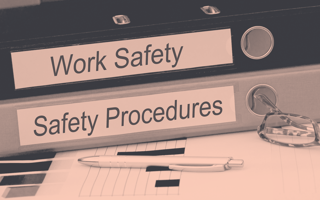It’s a tough subject, but an essential one: Recent public acts of violence — like the shootings in Boulder and Indianapolis — have made community members, organizational leaders and safety officials starkly aware of the risks that accompany a return to work.
Because we provide a platform to assist businesses in providing the kind of critical communication necessary to safely and effectively reopen, we conducted a pulse check to see how people are feeling about public safety. The survey showed that 75 percent of respondents are very or somewhat concerned about acts of violence in public spaces.
This growing concern, coupled with recent events, means that organizations must consider employee safety as they prepare for the reopening of businesses. As vaccinations become more widely available and government-mandated safety measures become less strict, organizations need to determine their return to office strategies and ensure that they have the proper processes, tools and solutions in place for a wide variety of emergencies. Whether businesses decide to return to work in full capacities, work from home indefinitely or take a hybrid approach, one thing is sure: Consistent and effective communication with employees continues to be of the utmost importance.
Here are some best practices company leaders can follow in order to ensure their organizations are equipped with the proper communication tools when the unexpected takes place.
Develop Sound Communication Strategies for a Hybrid Workforce
Let’s face it: The new way of working will likely look more like a hybrid model of in office and remote environments. However, this makes communicating with a workforce much more complicated than in pre-COVID days, when everyone was in the same building at the same time. Deploying communication platforms that give businesses the ability to send immediate notifications in an emergency event — whether it be a confirmed case of COVID-19 or an active assailant — will provide clarity and direction for all stakeholders involved.
To do this, organizations must implement tools that provide two-way communication with employees, both to increase engagement and to serve as a channel in an emergency. Having this open door will first ensure everyone can receive alerts, but it also provides individuals with a way to voice concerns and enable well-being and safety check-ins. Giving employees options when it comes to communications can also help ensure they are received and read.
Some employees who travel or commute a lot may prefer text message updates while others prefer notifications via email. Geo-targeted messaging is important for a workforce that is distributed across multiple locations and facilities. Targeted messaging provides a practical solution that will reduce alert fatigue so employees receive notifications that are relevant for their department, office or location.
Equip Employees With Appropriate Resources
With many employees working in a hybrid situation or returning after the long work-from-home period, emergency procedures may not be top-of-mind. For this reason, organizations should strongly consider providing an easily accessible central resource that employees can access to answer questions, provide reminders and have up-to-date information readily available.
Implementing a personal safety application can check many of these boxes for HR or organizational leaders. Tools like safety apps can act as an easy central resource to make sure things like floor plans, contact information and emergency procedures are easy to find and review, enabling employees to get information and review important resources with ease.
Anonymous tip lines can also be a useful resource in ensuring a safe return to work, enabling employees to freely express concerns or report any suspicious behavior without fear of retaliation for voicing their thoughts. Another priority and resource that should be made available to employees — especially as many places are just starting to reopen — are automated health checks that flag any detection of symptomatic individuals and alert businesses to health status. By keeping tabs on any potential cases, organizations can put their employees at ease knowing that their well-being remains top of mind as well as their physical safety.
Ensure Key Stakeholders Are Connected
The first moments of an emergency — be it a medical incident, a fire or the threat of violence — can be chaotic. Many people need to be involved in coordinating a rapid and effective response. Therefore, when the unexpected strikes, the protocols and tools put in place as part of crisis management planning make all the difference.
Connecting all impacted and necessary stakeholders through an incident management platform can enable a quick, collaborative response in the face of an emergency. This type of virtual command center can make sure that roles and responsibilities are clear, all information gets shared across the organization and responding teams and procedures and protocols are followed and recorded. Taking this collaborative approach to safety can make a difference in critical moments, restoring a safe environment faster so that employees and workplaces are protected from harm.
The unfortunate truth is that we have seen rising incidents of workplace violence in the first few months of 2021. By implementing the communication tools that connect all appropriate stakeholders and employees with critical notifications, businesses can prepare responsibly for the unexpected.





